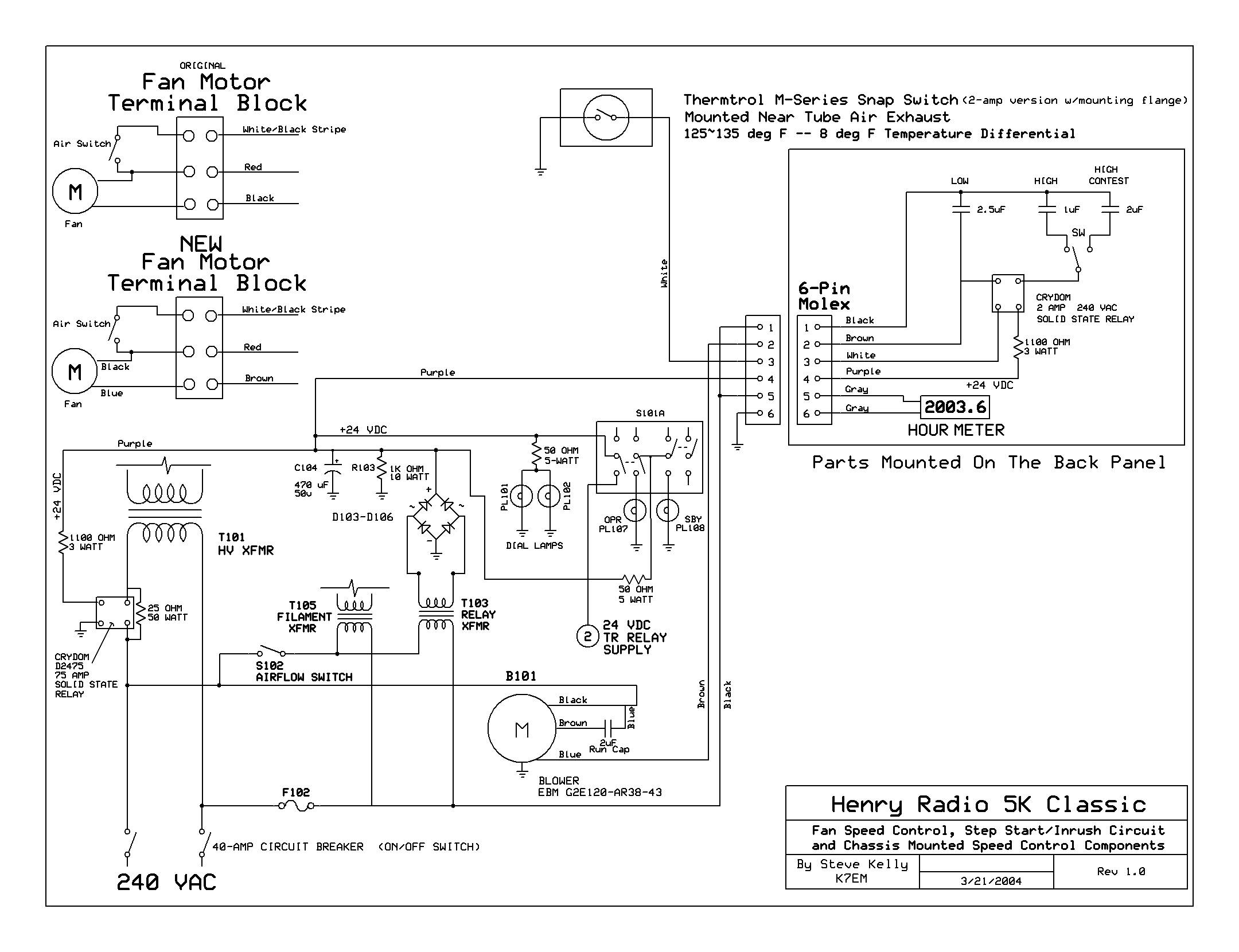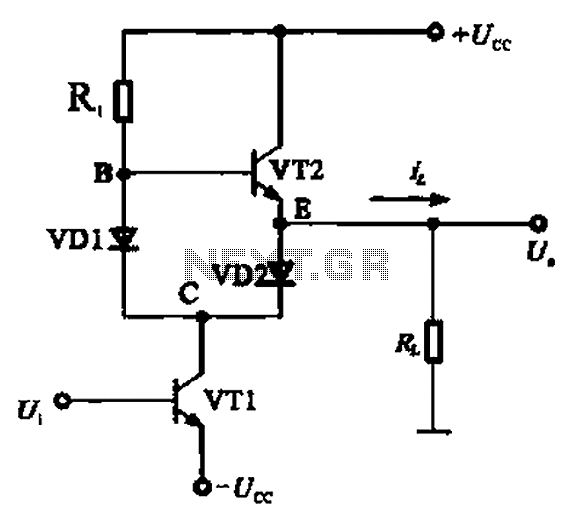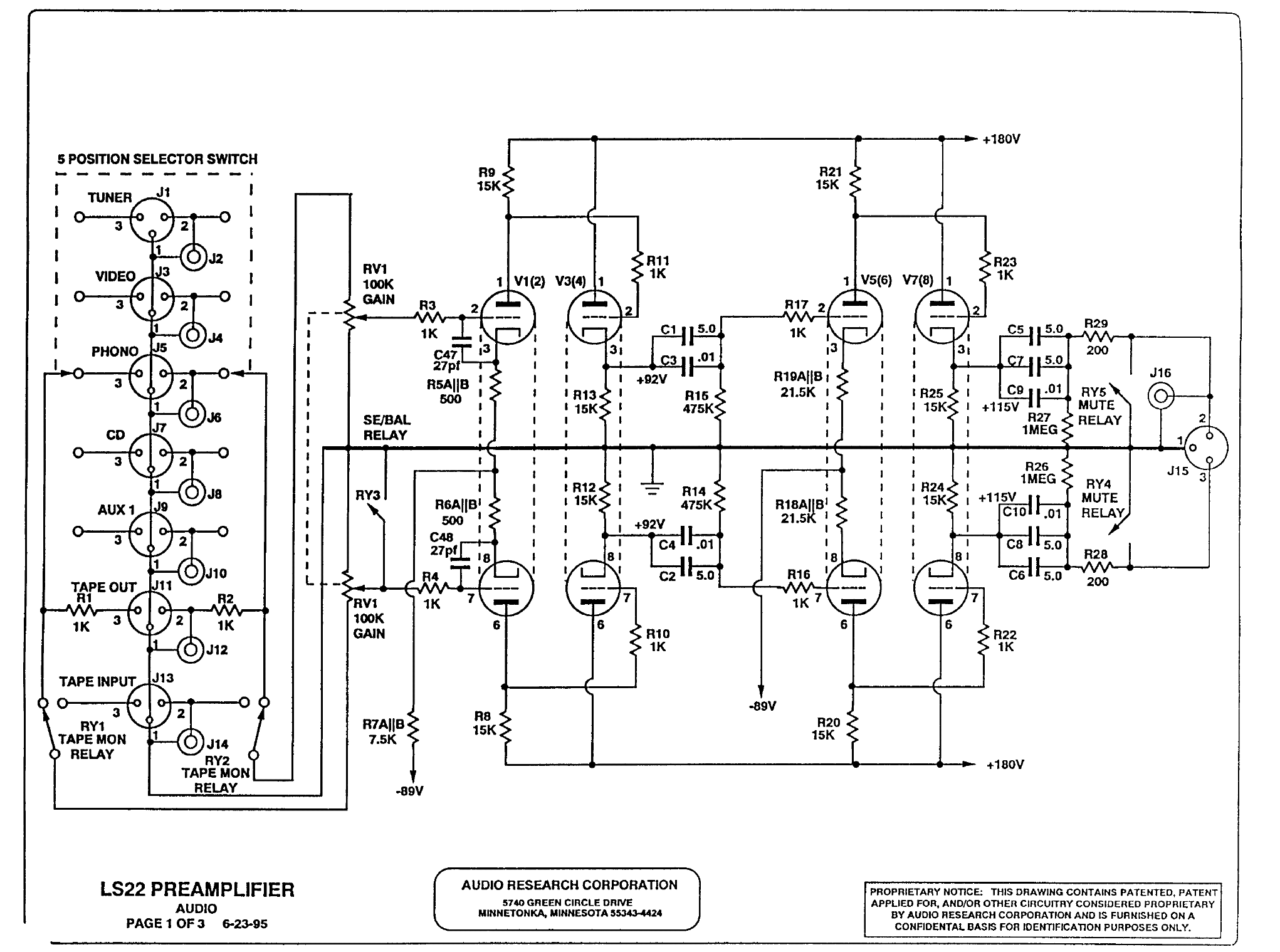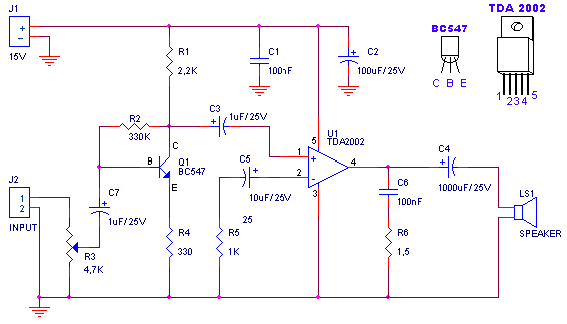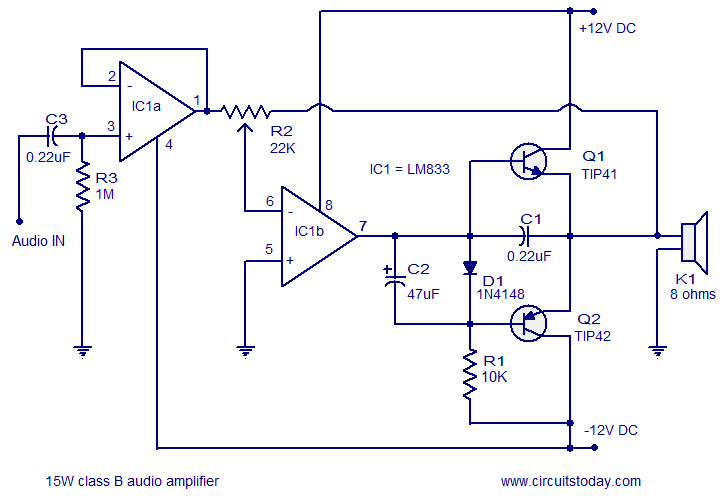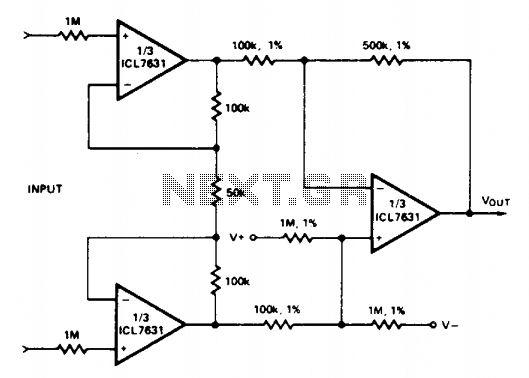
symmetrical preamplifier class a
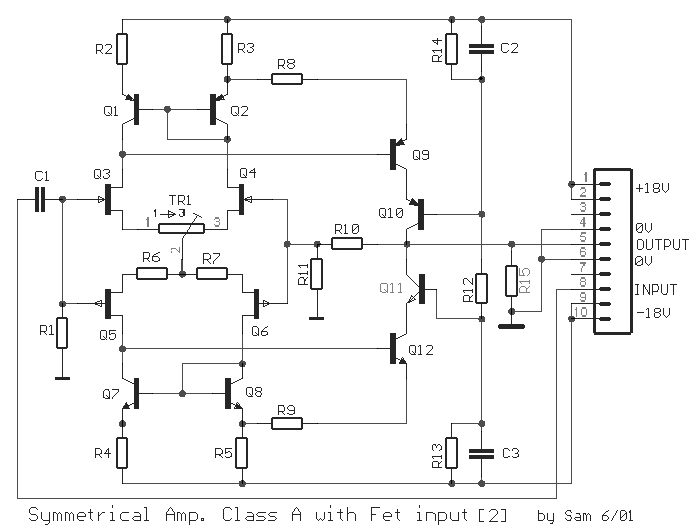
This is a symmetrical amplification unit circuit, modified based on a design proposed by Lisley Hood several years ago. The primary objective is to select the appropriate FET transistor for the differential amplifier at the input stage. Despite this modification, the circuit features a current mirror stage on both sides, which results in reduced overall negative feedback.
The symmetrical amplification unit circuit is designed to achieve high fidelity and low distortion in audio applications. The use of a differential amplifier at the input stage allows for the rejection of common-mode signals, enhancing the circuit's ability to amplify only the desired signals. Selecting the right FET transistor is crucial, as it influences the circuit's transconductance and overall gain characteristics.
The circuit's architecture includes a current mirror stage on both sides, which plays a vital role in maintaining balance and stability within the amplifier. This configuration ensures that the output currents are mirrored accurately, allowing for improved linearity and reduced distortion. The current mirror also helps in minimizing the effects of variations in transistor characteristics, thus enhancing the circuit's performance.
Furthermore, the reduction of overall negative feedback is a significant design consideration. While negative feedback is typically employed to improve linearity and bandwidth, excessive feedback can lead to instability and oscillations. By carefully designing the feedback network, this circuit achieves a desirable balance between stability and performance, resulting in a more robust amplification characteristic.
In summary, this symmetrical amplification unit circuit, inspired by Lisley Hood's design, incorporates a differential amplifier with a carefully selected FET transistor and a balanced current mirror stage. These design choices contribute to its effectiveness in audio amplification, ensuring high performance while minimizing distortion and feedback-related issues.This is a symmetrical amplification unit circuit, more composed, modified by a construction which was proposed some years ago by Lisley Hood. The most important reason is to get the right transistor FET at differential amplifier at input. In spite of all this it is a circuit which provides, current mirror stage of both sides, with the result of lessening the overall negative feedback..
🔗 External reference
The symmetrical amplification unit circuit is designed to achieve high fidelity and low distortion in audio applications. The use of a differential amplifier at the input stage allows for the rejection of common-mode signals, enhancing the circuit's ability to amplify only the desired signals. Selecting the right FET transistor is crucial, as it influences the circuit's transconductance and overall gain characteristics.
The circuit's architecture includes a current mirror stage on both sides, which plays a vital role in maintaining balance and stability within the amplifier. This configuration ensures that the output currents are mirrored accurately, allowing for improved linearity and reduced distortion. The current mirror also helps in minimizing the effects of variations in transistor characteristics, thus enhancing the circuit's performance.
Furthermore, the reduction of overall negative feedback is a significant design consideration. While negative feedback is typically employed to improve linearity and bandwidth, excessive feedback can lead to instability and oscillations. By carefully designing the feedback network, this circuit achieves a desirable balance between stability and performance, resulting in a more robust amplification characteristic.
In summary, this symmetrical amplification unit circuit, inspired by Lisley Hood's design, incorporates a differential amplifier with a carefully selected FET transistor and a balanced current mirror stage. These design choices contribute to its effectiveness in audio amplification, ensuring high performance while minimizing distortion and feedback-related issues.This is a symmetrical amplification unit circuit, more composed, modified by a construction which was proposed some years ago by Lisley Hood. The most important reason is to get the right transistor FET at differential amplifier at input. In spite of all this it is a circuit which provides, current mirror stage of both sides, with the result of lessening the overall negative feedback..
🔗 External reference
